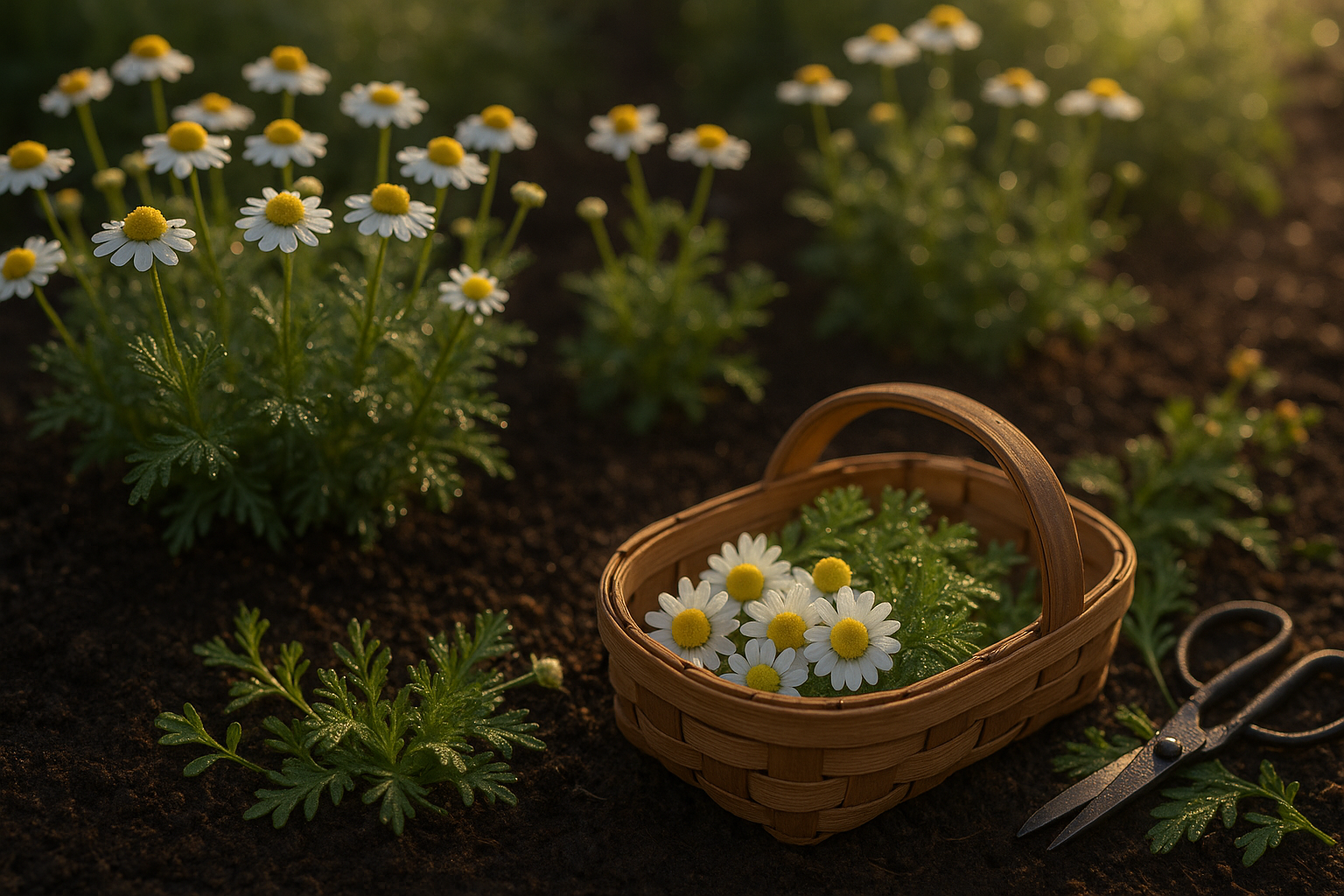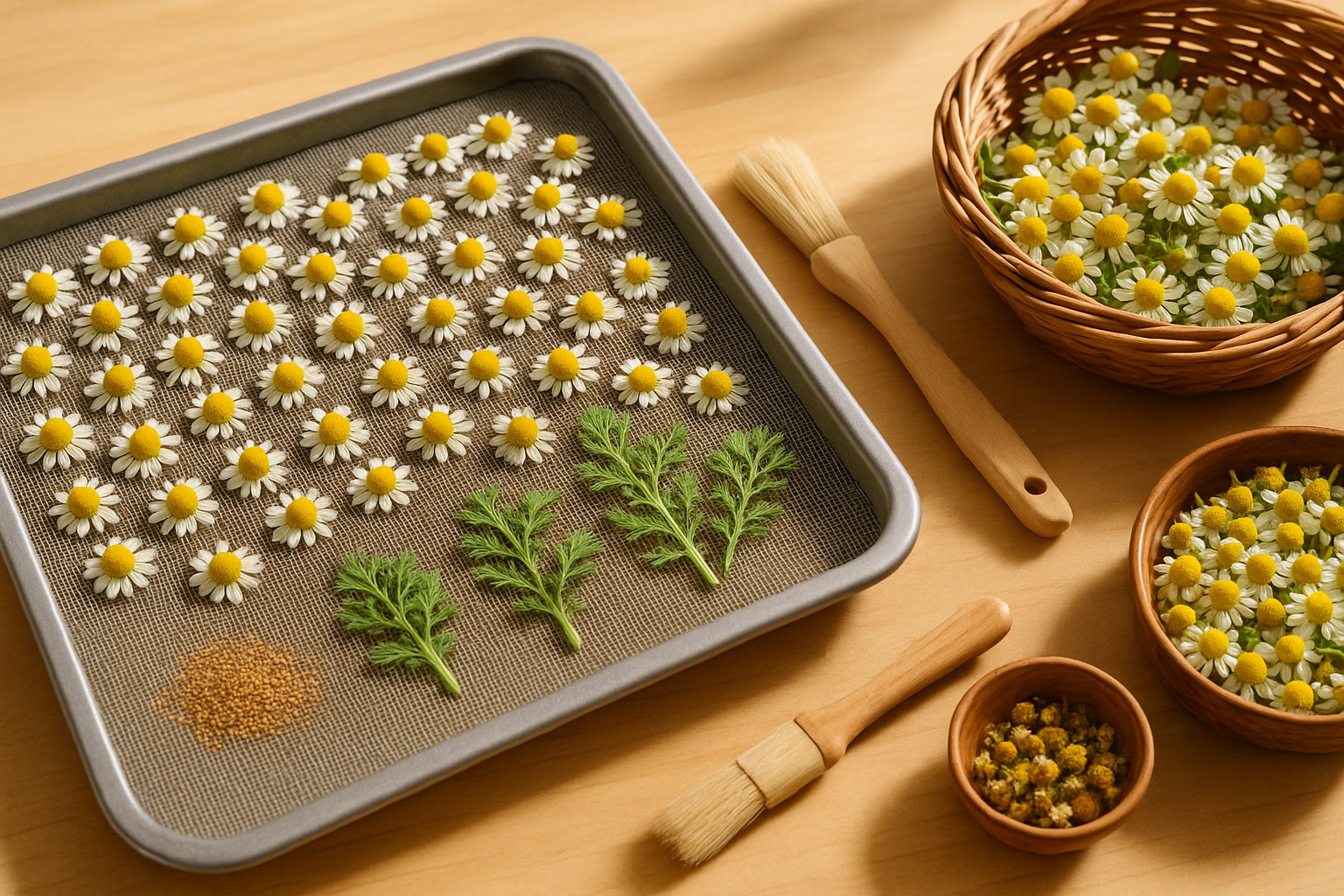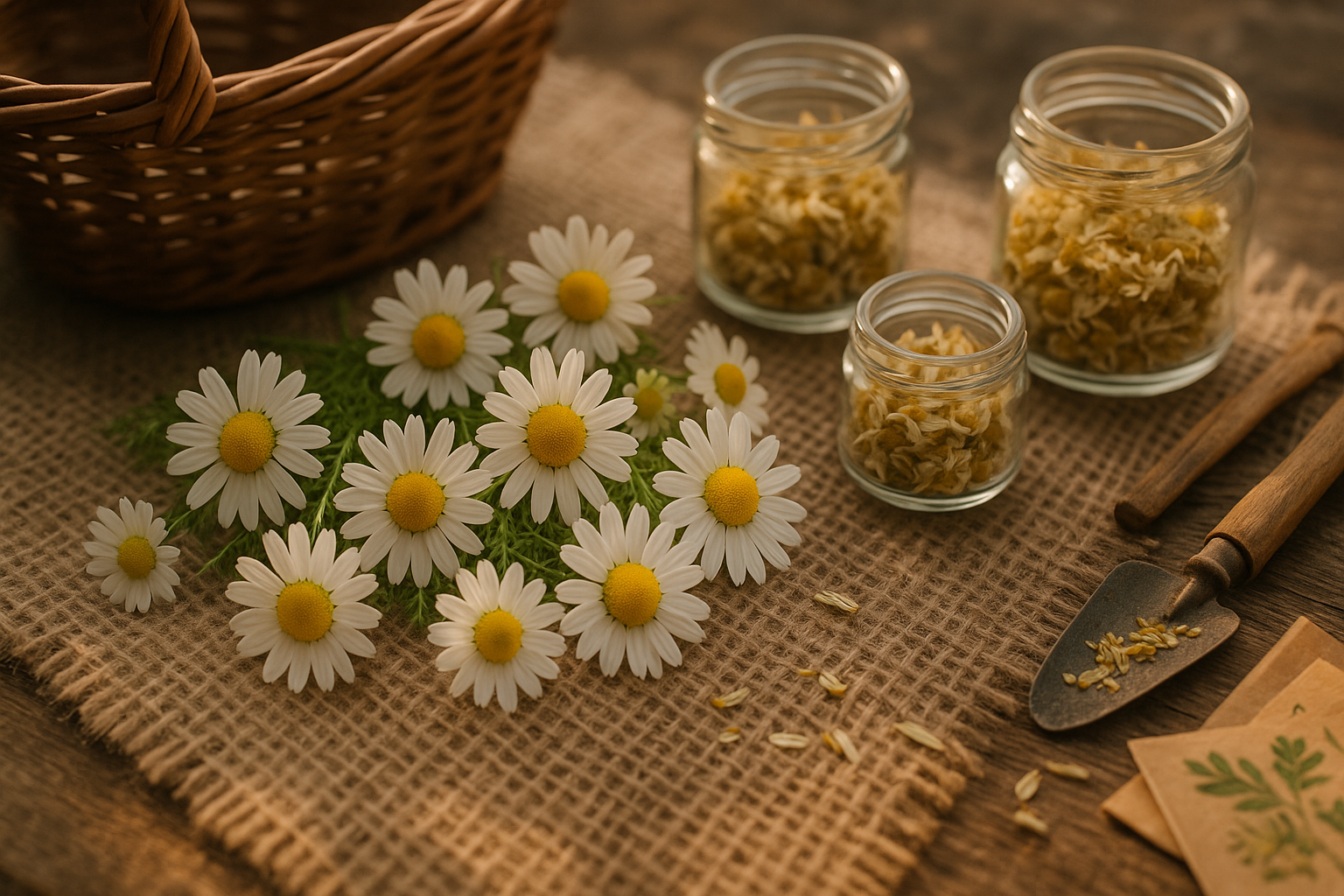Introduction to Chamomile and Its Uses
Drying chamomile flowers is a simple way to preserve one of nature’s most beloved herbs, known for its gentle, calming qualities and delicate, apple-like fragrance. Chamomile, with its dainty white-and-yellow blossoms, has been cherished for centuries in teas and homemade remedies—think bedtime teas that lull you to sleep, soothing compresses for tired eyes, or fragrant sachets slipped into drawers. If you’ve ever sipped a cup of chamomile tea to unwind after a long day, you’re already familiar with the comforts this little flower offers.
Beyond beverages, dried chamomile finds its way into skincare, bath products, potpourri, and even DIY crafts, making it a versatile staple in many homes.
But if you’ve ever picked up fresh chamomile at your local farmers market or grown a patch in your backyard, you might wonder how to ensure its shelf life or capture its flavor and aroma for later use. Drying chamomile flowers at home is both easy and rewarding—plus, it lets you control the quality from garden to cup.
In this post, you’ll discover the best techniques for harvesting your chamomile at just the right time, easy and effective methods for drying those precious flowers, and tips for storing them so they keep their soothing powers. We’ll also explore creative uses for dried chamomile, from making your own tea blends to infusing oils for homemade balms.
Whether you’re a seasoned herbal enthusiast or taking your first steps into DIY teas and remedies, you’ll find practical advice and inspiration for making the most of your chamomile harvest. Grab your basket, and let’s get started!
When and What Part of Chamomile to Harvest

Harvesting chamomile at the right time makes all the difference in the potency and flavor of your homegrown tea or remedies. The best season to harvest chamomile is late spring to early summer, just as the plants are in full bloom and before the days grow too hot.
Early morning, after any dew has evaporated but before the midday sun gets strong, is ideal since this helps preserve the delicate oils that give chamomile its signature scent and soothing effects.
When it comes to what to pick, focus on the cheerful, daisy-like flowers—these are the powerhouse of the plant, rich with essential oils and calming compounds. The best blooms for harvesting will have white petals fully open and radiating around a vibrant yellow center.
Avoid flowers where the petals are drooping backward or beginning to discolor, as they may be past their prime. Mature flowers will also give off a sweet, apple-like aroma when gently brushed by your hand; this scent is a good indicator they’re bursting with flavor and ready to use.
Snip the flower heads just above the base with clean scissors, taking care not to pull up the whole plant. Don’t worry if you miss a few—chamomile self-seeds easily, so any leftover flowers can help ensure a healthy patch next season.
For the best results, pick every couple of days during bloom to keep the plant producing new flowers and to make the most of your chamomile harvest.
Step-by-Step

Harvesting chamomile flowers is a simple, soothing process that anyone can do, even if you’re a beginner gardener. To get started, look for blooms with fresh white petals and a yellow center that sits up almost dome-like—these are at their most flavorful.
You can pinch the flower heads right off the stem using just your fingers; simply hold the base of the bloom and give a gentle pull, or pinch it off between your thumb and forefinger. If you prefer, tiny scissors or garden snips work too—just snip directly beneath the flower head for a clean cut.
Be sure to handle each blossom gently, as the delicate petals bruise easily, which can affect taste and appearance. As you pick, drop your flowers into a basket or a mesh bag to let air flow and prevent them from getting crushed.
Once you’ve gathered a batch, it’s time to clean them: spread the flowers on a kitchen towel and brush away any bugs or debris with a soft pastry brush. Avoid water as much as possible, since moisture can cause the flowers to spoil during drying. If you do need to rinse them, use cool water and pat dry immediately with a paper towel.
After that, your chamomile is ready for drying—spread the blossoms in a single layer on a screen or baking sheet in a warm, dry place out of direct sunlight. Turn them occasionally so they dry evenly and maintain their lovely color and aroma.
With a little care and gentle hands, you’ll soon have a supply of fragrant, home-grown chamomile ready for tea, crafts, or soothing homemade salves.
How to Dry Chamomile
Drying chamomile flowers at home is simple and rewarding if you use the right methods and take some care. Air drying is the gentlest approach—simply gather freshly picked, clean blossoms, remove any damaged petals, and lay them in a single layer on a mesh screen or paper towel in a dry, well-ventilated room out of direct sunlight.
This process can take up to two weeks. To speed it up and prevent mold, make sure there’s plenty of airflow by occasionally turning the flowers and avoiding crowded piles. If you’re short on time or live in a humid area, a food dehydrator set to its lowest heat (around 95–105°F or 35–40°C) is an excellent alternative.
Arrange the chamomile heads in a single layer on the trays and check every few hours. They’re ready when the petals and centers feel papery and crumbly to the touch. You can also use your oven on its lowest setting—leave the door propped open to let moisture escape and keep a close eye on the flowers to prevent over-drying or color loss.
Before drying, always remove stems and any extra green material for the best results. To preserve the bright yellow centers and sweet aroma, avoid exposing the flowers to strong light, high heat, or moisture during drying and storage.
Once fully dried, store chamomile in airtight containers in a cool, dark cupboard to keep them fresh and fragrant for herbal teas or crafts all year long. If possible, label your jars with the drying date so you can enjoy the best flavor before potency fades.
By handling chamomile gently at every step, you’ll get beautiful, aromatic blossoms ready for use just when you need them.
Storing Dried Chamomile
To keep dried chamomile fresh and potent, store it in airtight containers such as glass jars with tight-fitting lids or food-grade metal tins. Avoid clear containers if the storage area gets a lot of light—opaque or amber jars help block sunlight, which can quickly degrade chamomile’s color and flavor.
Moisture is the enemy of dried herbs, so always ensure your chamomile is completely dry before storing it. The flowers should feel crisp and papery, easily crumbling between your fingers with no dampness or pliability. If you’re unsure, spread the blossoms on a tray in a warm, dry place for another day or two.
Once stored, choose a cool, dark cupboard or pantry to further extend its shelf life. Properly dried and stored chamomile can last up to a year, but its potency gradually fades over time.
To check if your chamomile is still good, crush a small handful—the aroma should be sweet and apple-like. If the scent is faint or musty, consider using more in your tea or refresh the supply by popping it in a warm oven (lowest setting) for five minutes to revive its fragrance and flavor.
Always watch for signs of spoilage like mold or an off-smell, and when in doubt, it’s safer to compost the old batch and start fresh with a new harvest.
Using Your Dried Chamomile
Making chamomile tea with dried blossoms is wonderfully easy—just steep one to two teaspoons of dried chamomile flowers in a cup of hot (not boiling) water for about five minutes, then strain and enjoy a calming, floral sip. But don’t stop at tea!
Dried chamomile can add a gentle fragrance and a rustic touch to your home—try mixing the blossoms with lavender, rose petals, and citrus peels to create a homemade potpourri.
For a soothing “spa night,” tuck a handful of dried chamomile into a muslin bag, then drop it into your bath for a relaxing soak that’s gentle on sensitive skin.
If you like crafts, glue the blossoms onto cards or candles for a natural, charming look.
Chamomile also pairs beautifully with other herbal flavors—mix it in your tea with dried mint to help digestion, or add a pinch of lemon balm for extra calm before bedtime.
For a tasty twist, blend chamomile with green tea and slices of fresh apple, or infuse it into honey for a sweet treat over toast or yogurt.
With just a handful of dried blossoms, you can bring soothing aroma and gentle wellness into every corner of your life—get creative and see where chamomile takes you!
